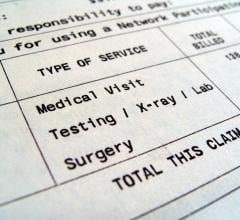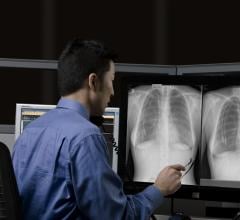November 9, 2021 — GE today announced its plan to form three industry-leading, global public companies focused on the ...
Prologue In 2014, Imaging Technology News (ITN) introduced breast cancer survivor-turned-crusader Nancy Cappello, Ph.D ...
As the world has been consumed with the global COVID-19 pandemic, another disease continued to devastate lives and ...
Radiology departments have many different needs and face a wide variety of challenges that can impact their departments ...
Confidence is like the autopilot on an airplane. It provides assurance and support that we are going in the right ...
Radiology is a complex service line. It is an ever-changing landscape fueled by ongoing hospital mergers and ...
November 8, 2021 — The following links to all the highlighted sessions presented at the American Society for Radiation ...
Despite decades of progress in breast imaging, one challenge continues to test even the most skilled radiologists ...
This is an image gallery of technologies on display on the expo floor at the 2021 American Society of Radiation Oncology ...
November 5, 2021 — Robert Chin, M.D., Ph.D., a radiation oncologist with UCLA Jonsson Comprehensive Cancer Center, will ...
November 5, 2021 — The U.S. Food and Drug Administration (FDA) authorized the emergency use of the Pfizer-BioNTech COVID ...
Bayer Radiology’s Barbara Ruhland and Thom Kinst discuss how radiology departments can address the many different ...
November 5, 2021 — The damage caused by Covid-19 to the lungs’ smallest blood vessels has been intricately captured ...
November 5, 2021 — Most respondents (60%) to an American College of Radiology (ACR) member survey on Non-Physician ...
Here is a list of some of the top overarching trends in enterprise radiology systems the editors of Imaging Technology ...
eHealth Saskatchewan plays a vital role in providing IT services to patients, health care providers, and partners such ...
Taking advantage of new technology advances, several radiology PACS, enterprise imaging and cardiovascular information ...
The computed tomography (CT) market was valued at $6.7 million in 2020, and it is expected to reach $9.5 million by 2026 ...
The in-person 2021 Healthcare Information Management Systems Society (HIMSS) meeting in August was the first glimmer of ...
November 4, 2021 — The Centers for Medicare and Medicaid Services (CMS) today issued an emergency regulation now ...
The U.S. Food and Drug Administration (FDA) cleared the world's first photon-counting computed tomography (CT) scanner ...
November 3, 2021 — MIM Software Inc. announced it has received 510(k) clearance from the U.S. Food and Drug ...
November 3, 2021 — Mirion Technologies, Inc., a global provider of detection, measurement, analysis and monitoring ...
November 3, 2021 — “Brilliant workflows. Made for you.” is the key theme for international medical imaging IT and ...


 November 09, 2021
November 09, 2021 





















